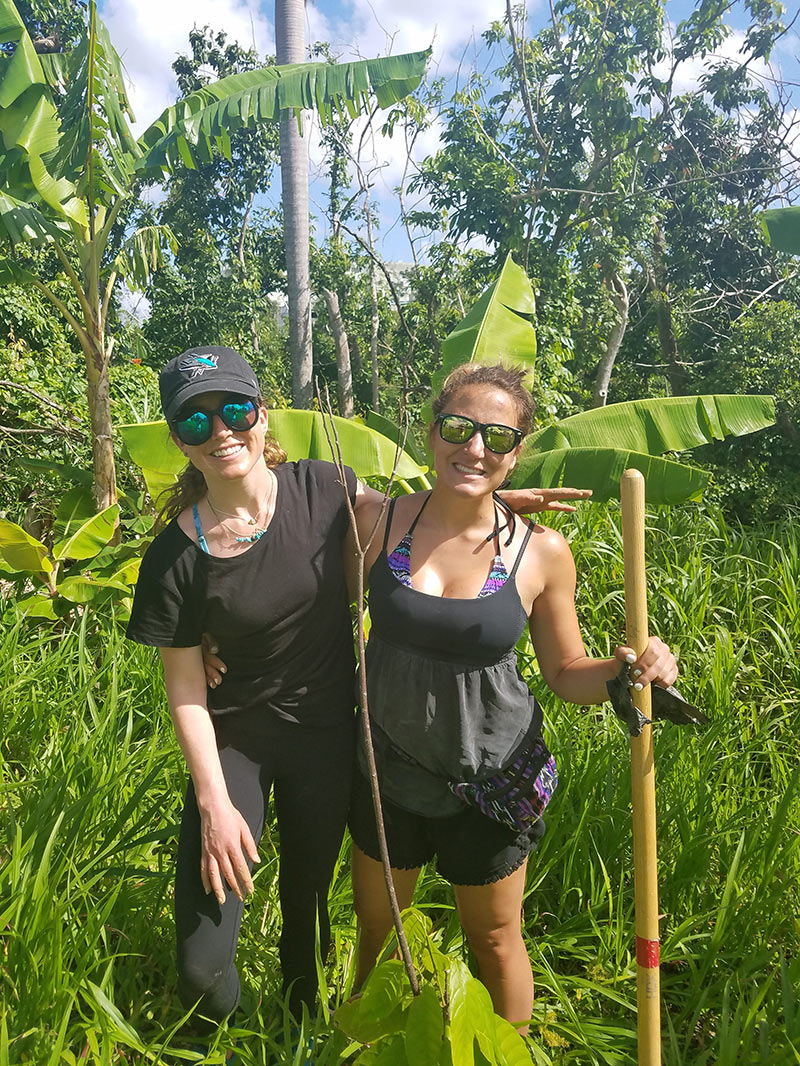The San Juan Waterworks are one of the places where the Hábitat ecological recovery plan is being implemented. Thirty native trees were planted near the Piedras river, which runs through one of the most urbanized zones of the city of San Juan.
Riparian forests are adjacent or near rivers, and are important to preserve the quality of water, to control erosion and to provide shelter to wildlife, while helping to diminish the dangers of flooding caused by rising river waters.
Some of the native trees planted in this area were Pterocarpus, sea grapes, partridge wood, bulletwood and American musk wood. These species are adequate for river zones because they adapt to humid ecosystems and are prepared to endure flooding.
The planting activity at the San Juan Waterworks counted on the participation of ten volunteers. Among them were Noelia Colón and her son, José Antonio Colón, who were also joined by a friend, José Guzmán. It was the first time they participated in a Para la Naturaleza event. They arrived very early in the morning to complete the “Contacto Verde” (ecological contact) hours required by their school, Escuela Andrés Valcárcel, of Trujillo Alto.
“We loved this experience. We will be back because, even though the sun has been quite strong, we have learned a lot,” said 12-year old José Guzmán.
Meanwhile, María Santiago, who is retired, lives in a condominium and cannot plant trees in her apartment, decided to take part of this activity to lend a helping hand.
“It has been a fantastic experience. They have shown us how to dig a hole, which type of materials to use as fertilizer, the specific types of soil, the designated spaces between species— everything you need to know to plant successfully and correctly,” María said.
Lora Koue and Kateland Randal traveled from Vail, Colorado, with several friends to spend their vacations in Puerto Rico and offer some volunteer work.

“We found Para la Naturaleza in social media and we thought it would be great to participate in these plantings to help the country recover after hurricane Maria,” Lora stated.
Kateland, for her part, added “I work with many Puerto Ricans in the hospitality industry in Colorado and we wanted to visit [Puerto Rico] so that we could help and give something back. Donating money is the first thing people tend to do, but we wanted to come and see what is truly happening in the country and personally come and help.”
Para la Naturaleza launched Hábitat this past April. It integrates massive planting activities — in all the islands of Puerto Rico — of trees and shrubs that are native, endemic and rare. It also involves a citizen education program with community integration to accompany these plantings to ensure the forests of the future.
Puerto Rico has more than 547 species of native, endemic and rare trees and shrubs. Trees provide important ecological services. They are crucial for our climate and are also a source of food and shelter for native wildlife. Native species have adapted to the climate and geological characteristics of our geographic surroundings, which make them more resistant to atmospheric phenomena such as storms and hurricanes.

